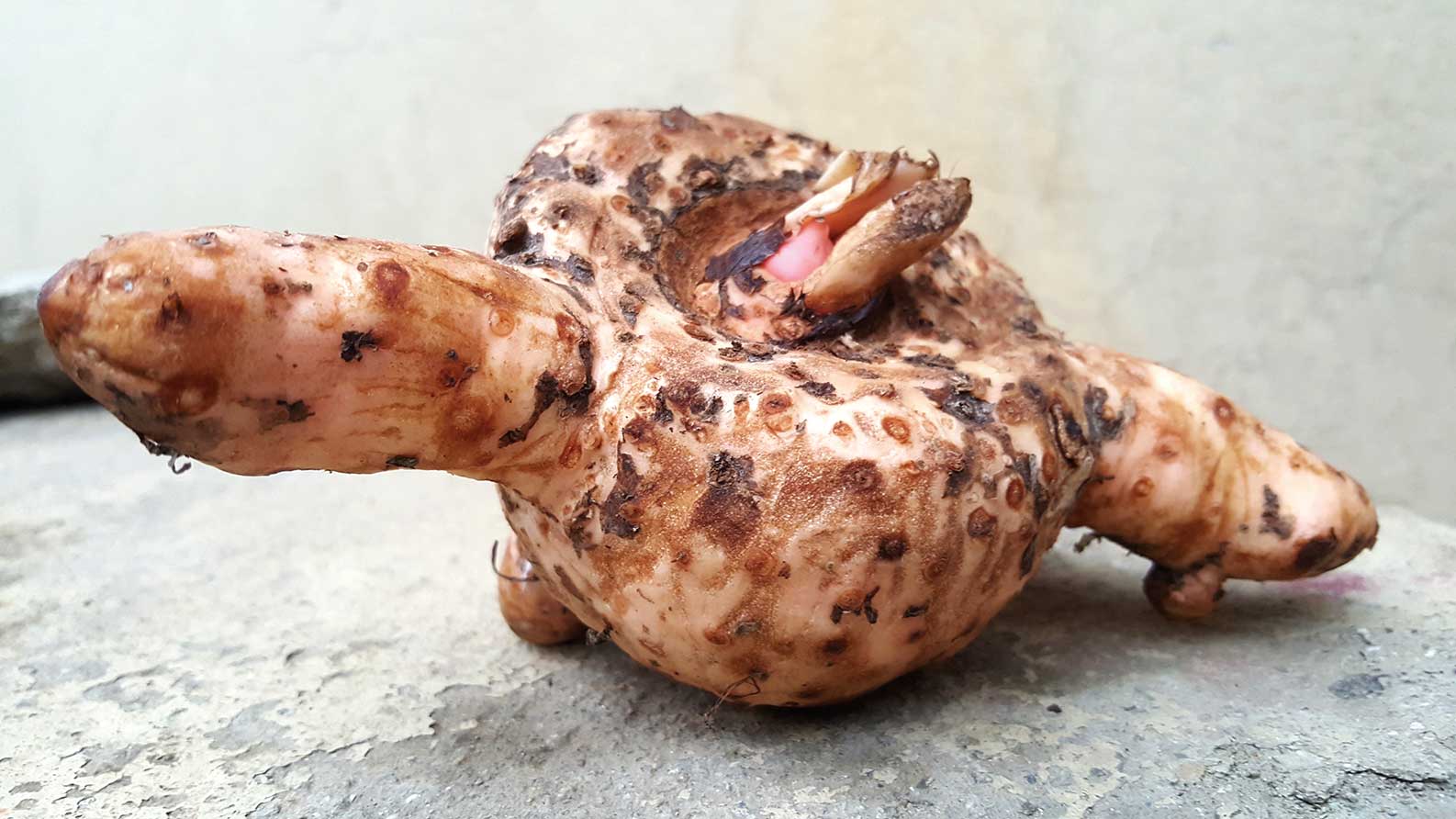Food, in Newari culture, is not consumed merely for survival. It has a larger significance. On the surface, the significations attached to food and the reason behind eating certain food a certain way and on specific occasions may seem to be based on illogical superstitions. But, if you give it a thought, the reasons are logical and religion and superstition being just masks – excuses given to see to it that people do certain things that are beneficial for their own bodies.
 Bwo Tegu (where bwo means palate and tegu means keeping) refers to the ritual where Newars, especially ones belonging to the Jyapu community, place certain food items around a handful of beaten rice on a leaf plate and offer it to themselves. There are nine quintessential food items which are placed on the palate, collectively called the bwo ghasa (where ghasa means items). The nine items are placed around the beaten rice from left to right. On the very left comes pieces of ginger (palu) followed by black soya beans (haku musya), beans (bhuti), lentil patties (woh), square pieces of pumpkin (khepi), a type of a lentil (Pa mya)), small, rectangular pieces of pumpkin (chapi) and green vegetable (tukwoncha). After the tukwoncha, on the very right end, the chickpea (kanghasa) is placed. These items are the most minimal number of starters in any proper meal eaten during special or religious occasions such as during saraddhas (ceremonies in memory of the dead) and other religious events. This bwo is especially important when serving the aajus - the high priests of the communities.
Bwo Tegu (where bwo means palate and tegu means keeping) refers to the ritual where Newars, especially ones belonging to the Jyapu community, place certain food items around a handful of beaten rice on a leaf plate and offer it to themselves. There are nine quintessential food items which are placed on the palate, collectively called the bwo ghasa (where ghasa means items). The nine items are placed around the beaten rice from left to right. On the very left comes pieces of ginger (palu) followed by black soya beans (haku musya), beans (bhuti), lentil patties (woh), square pieces of pumpkin (khepi), a type of a lentil (Pa mya)), small, rectangular pieces of pumpkin (chapi) and green vegetable (tukwoncha). After the tukwoncha, on the very right end, the chickpea (kanghasa) is placed. These items are the most minimal number of starters in any proper meal eaten during special or religious occasions such as during saraddhas (ceremonies in memory of the dead) and other religious events. This bwo is especially important when serving the aajus - the high priests of the communities.
The nine food items each represent sentinels, goddesses and Bhairavas placed around the then Malla kingdom for protection. Eating the bwo, it is said, makes one invincible from any harm as one consumes the representation of the nine protectors.
This bwo, once served, is followed by a variety of items – different eatable parts of animals such as the buffalo and the duck, egg, fish as well as various other vegetable curries. Normally, there are up to 22 items that are served at one sitting but on occasions such as weddings and rice-feeding ceremonies there are 84 varieties served. This is termed as ‘Chaurasi Byanjan’ in Nepali meaning, a meal with 84 items. In Newari, this is commonly called the thaybhu and this is served in a bronze plate elevated with a stand to signify its utmost importance.
The items on the bwo and the varieties that follow suit make up a complete balanced diet. The food ‘sentinels’ are actually protectors, in the sense that they provide one with the necessary nutrition and hence strengthen the immune system. Though this idea of bwo tegu is not practiced religiously as it used to be previously by ordinary people, the bwo is still considered important when serving the aajus.











